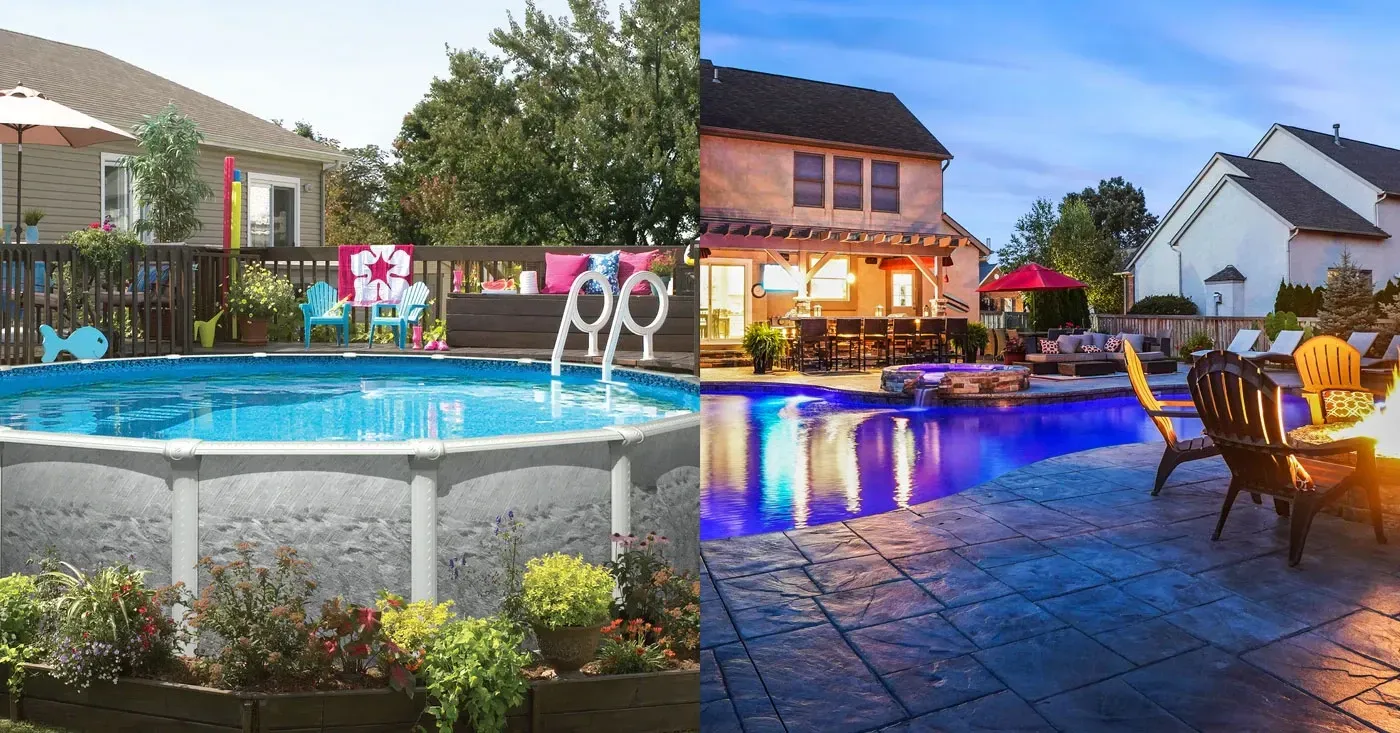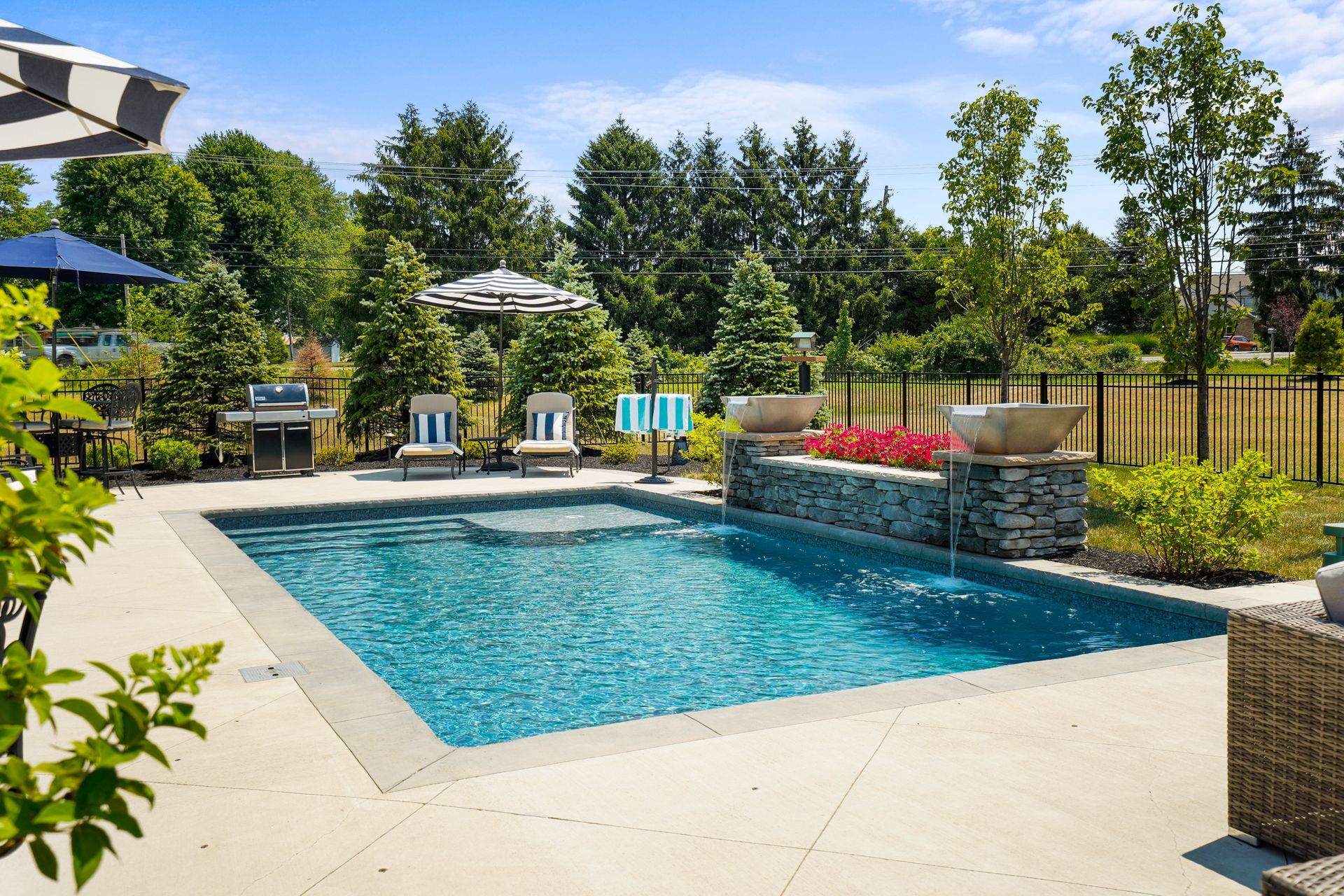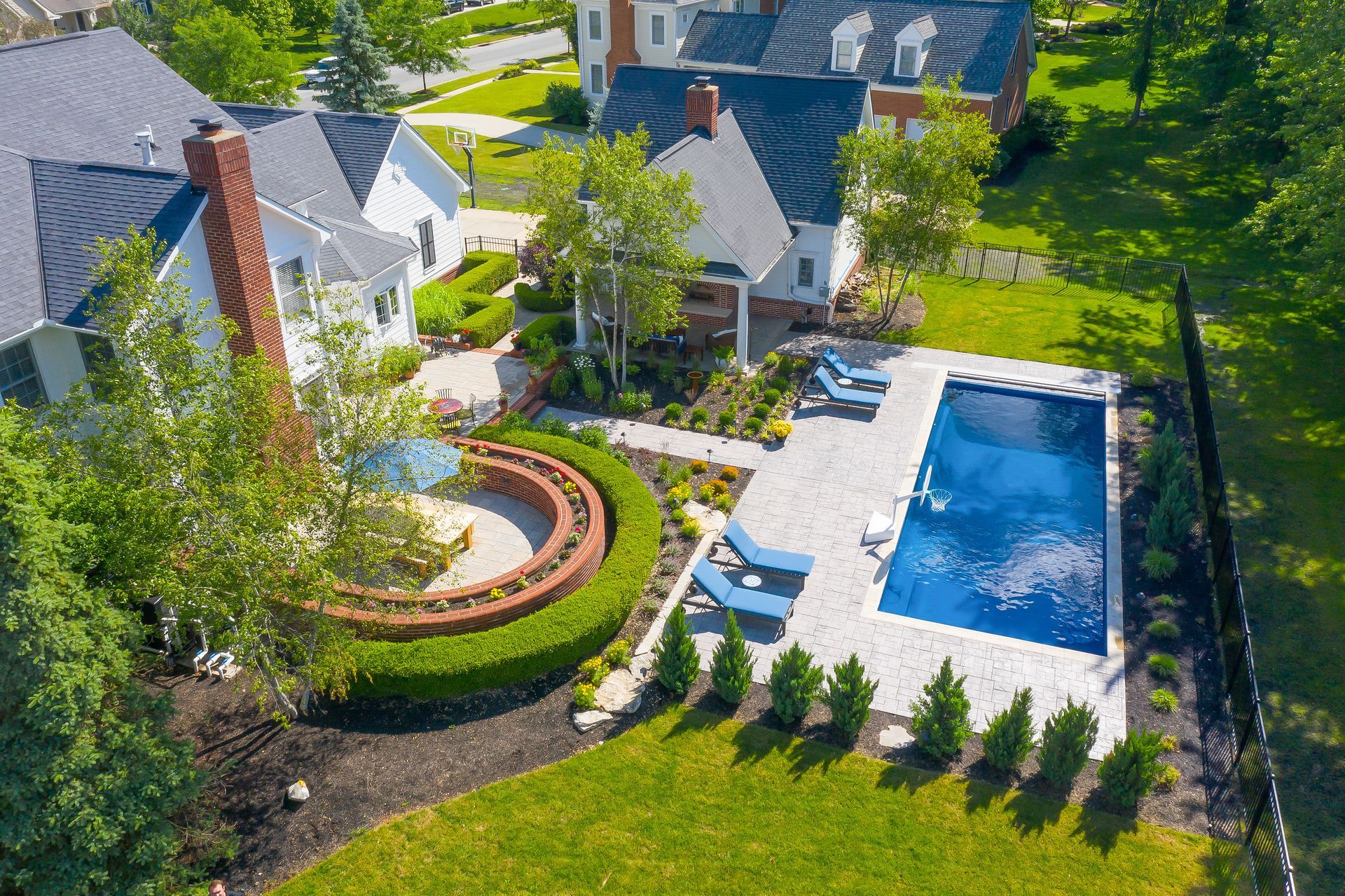Above-ground vs In-ground Swimming Pools

If you would love to see your family swimming and enjoying your backyard living space, a swimming pool is exactly what you need. Swimming pools come in many different designs and with various options, but the first question you will need to answer is whether you want to have an in-ground or an above-ground swimming pool. These are two very different investments, so it’s important to know the pros and cons of both types. Read on to learn more about what to expect from each type of pool so you can make the decision that is right for you.
Are Swimming Pools Permanent or Temporary?
When you picture a swimming pool in your yard, you probably envision using it for many years, perhaps even many decades. An in-ground pool, depending on the materials used, should do exactly that. It’s common for this type of pool to last 20 years or more, so it’s possible that your grandchildren will swim in the same pool that your children are currently swimming in. The installation process involves leveling the yard (if needed), digging a large hole, preparing the site for the pool, actually installing the pool, then installing any
accessories (such as a heater) and filling it.
An above-ground pool, however, is considered a temporary structure. It goes up in a matter of a couple of days and while you might need the ground level first, it will not permanently alter the landscape of your yard. It will probably last around 10 years, at which time the structure will begin to become less stable. When the pool has lived its life, it can be easily removed and, after some time, the grass will grow back and you will not be able to tell that there was ever a pool in that place.
If you are looking for a long-term investment, an in-ground pool would make the most sense. If, however, you think you’d only like to use the pool for a handful of years and then would like it removed, an above-ground pool might be the best choice for you.
Which Type of Pool Provides More Customization Options?
If you are looking for a custom-designed pool, then an in-ground swimming pool is going to be the only real option. These come in virtually any shape you can imagine and with a wide range of features, from internal lighting to waterfalls. They also come in various depths; you can have a pool that is the same depth throughout or you can choose to have one side much deeper to create a safe area for diving. Your Ohio swimming pool contractor will be able to go over all of the many options with you.
An above-ground pool, however, generally comes in oval and round shapes, and there are several standard sizes to choose from. The depth is usually about four feet (some are a bit deeper) and diving is not ever going to be safe in this type of pool. There are not many special features to choose from. When it comes to an above-ground pool, what you see in the catalog or in a design studio is what you will get.
How Much Do These Swimming Pools Cost?
If you are operating on a tight budget, then an above-ground pool might make the best choice. They are substantially less expensive than an in-ground swimming pool, mainly because they are quick and easy to install and because the ground doesn’t have to be permanently modified (outside of leveling in some cases). With that being said, keep in mind that the cost of an above-ground pool (which will probably be in the $5-10K range) will not include any decking, which might be just as expensive, if not more expensive, than the pool itself.
An in-ground pool will cost several times more than an above-ground pool, but the final cost will include the grading, landscaping, and decking. It will also include the electric work needed to hook up the pool to your power system. When it comes to maintenance, the routine cleaning and chemical balancing will be about the same for both types of pools. Do keep in mind that liners on both types of pools will need to be replaced and that concrete pools will need to be resurfaced every decade or two, which can add to the overall cost.
What Impact Will Your Pool Have on Resale Value?
In general, an above-ground pool is not usually seen as a long-term investment and will not raise the value of your property. It might actually be detrimental to the value of the property because the new owners might not want to deal with having it removed right away or at some point in the near future. Also, some people find above-ground pools to be unattractive.
In-ground swimming pools do raise the value of a home, particularly in areas where swimming pools are common and desired. They look attractive, provide space for entertaining, and last for a long time, so new owners are not likely to have to worry about replacing or removing it in the near future.
Omni Pools & Scapes designs and installs custom in-ground swimming pools in Ohio. Contact us if you would like to talk about your future swimming pool needs.
OMNI LEARNING CENTER
RECENT POSTS



